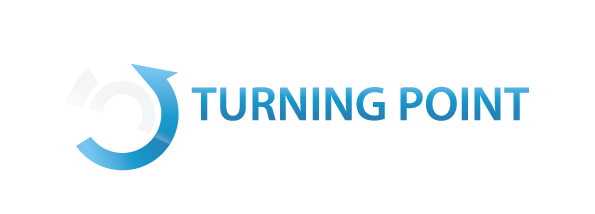
Sexual orientation and gender identity are important topics to be addressed within work environments, but most employers, coworkers, and clients are unaware of how to approach these topics. What can be asked? What are the best practices? How can employers talk about sexual orientation and gender identity in the workplace without infringing on people’s privacy or making LGBT+ employees feel uncomfortable, in the spotlight, or tokenized? The research by Canadian Centre for Diversity and Inclusion identified multiple recommendations for how employers can improve inclusion for LGBTQIA2S+ identified individuals.
Provide Opportunities
LGBTQIA2S+ individuals should have the opportunity to self-identify or disclose their sexual orientation or gender identity in the workplace without pressure or fear of persecution. However, recognizing that discrimination still occurs towards LGBTQIA2S+ people, if a workplace offers a formal opportunity to disclose, it must be done appropriately with attention to privacy and confidentiality protocols, and it must be voluntary. The individual must have the final choice regarding disclosure without any expectation or pressure
Build Trust Before Expecting Disclosure
An organization that does not have an inclusive culture, or where there have been incidents of homophobia or transphobia in the work
place, cannot reasonably expect disclosure from LGBTQIA2S+ employees. Employers should strive to create an inclusive environment and be clear about expectations around respectful behaviour in the workplace to begin to establish that trust. [edited] It would be appropriate for the employer to mention the diversity programs in place for all groups to illustrate the opportunities for inclusion instead of expecting self-disclosure before trust has been built.
Communicate the Purpose and Privacy Protocols for Demographic Data Collection
It is also necessary for an organization to reflect on why they are providing individuals the opportunity to self-identify. An organization that allows individuals to self-identify in a diversity census, but does nothing with that data to meet the needs of these employees, is going to risk losing the trust of their employees. In fact, this kind of action could create an adverse response from LGBTQIA2S+ individuals who may feel cheated or tricked. Equally, employees may be reluctant to self-identify if they are unsure who has access to their personal data. Recognizing the potential risk of disclosure in some situations, employees should be assured of safety and provided the choice to determine what is best for them in terms of disclosure, how they choose to disclose, and to whom they wish to disclose.
Ultimately, the opportunity created for self-disclosure should be intended to help ensure that LGBTQIA2S+ employees are treated equally, are enabled to communicate their unique needs, and be included fully in the workplace. If the employer demonstrates a sincere commitment to improving inclusion, then the process of data collection may be perceived more favorably and may enable greater employee engagement.
More on data collection can be found at www.diversitycensus.com
Act on the Data
In creating a space for self-identification by LGBTQIA2S+ individuals, the organization has more than a legal obligation; they are making a psychological contract with employees that they will use this information to create more inclusive workspaces. Developing and providing resources and education for all employees are methods of fulfilling the implied contract to support LGBTQIA2S+ employees.
Provide Additional Resources and Services to Promote Inclusion
Examples that an organization could implement include:
- Bringing in guest speakers to talk about diversity and inclusion as part of employees’ professional development,
- Supporting employees who want to initiate an LGBTQIA2S+ and ally Employee Resource Groups
- Encouraging employees to participate in, or engage with local LGBTQIA2S+ organizations and events,
- Creating a diversity and inclusion strategy to address inclusion issues within the workplace, ensuring that LGBTQIA2S+ issues are taken into consideration, and
- Establishing diversity councils or committees to ensure there is accountability and cross-functional support to operationalize the strategy.
Ensure Policies Encourage Inclusion
Certain practices may not initially appear to create barriers for LGBTQIA2S+ individuals, but upon greater reflection, it becomes apparent that these practices affect each individual differently. Even if an organization is not aware of employees that are LGBTQIA2S+ identified, it should strive to create accessible and inclusive policies nonetheless. Just because they are not “out” in the workplace, does not mean they are not there. In fact, if an employer has a significant number of employees and no one is “out”, they should focus on why LGBTQIA2S+ identified employees do not feel comfortable or safe to come out, rather than assuming they simply have no LGBTQIA2S+ identified employees. When an organization creates sexual orientation and gender identity inclusive policies and practices that respect the broad spectrum of identities, not only do they support LGBTQIA2S+ employees, but this also serves to educate other employees by creating dialogues and learning opportunities.
Create an Inclusive Organizational Culture
In reinforcing the importance of creating and enforcing inclusive policies and practices, it is necessary for organizations to foster cultures of acceptance that are inclusive of sexual orientation and gender identity minorities, along with other dimensions of diversity. If organizations want to be recognized as authentically promoting inclusion, efforts need to be taken to increase the quality, breadth, and impact of diversity and inclusion work. Creating an inclusive culture allows people to bring their whole selves to work and to not feel like they have to hide an important part of their identity. This contributes to feeling included and engaged, which leads to them being able to perform at their best.
Do Not Tokenize LGBTQIA2S+ Employees
The burden cannot be placed solely on LGBTQIA2S+ individuals to motivate the organizational change for inclusivity or be the “go-to” people to speak on all matters pertaining to sexual orientation and gender identity. Individuals should not be tokenized for their identity to represent an entire community. Organizational leaders, human resources professionals, and all employees have the responsibility to become educated on how to make an inclusive environment for LGBTQIA2S+ employees and create a culture of acceptance.


